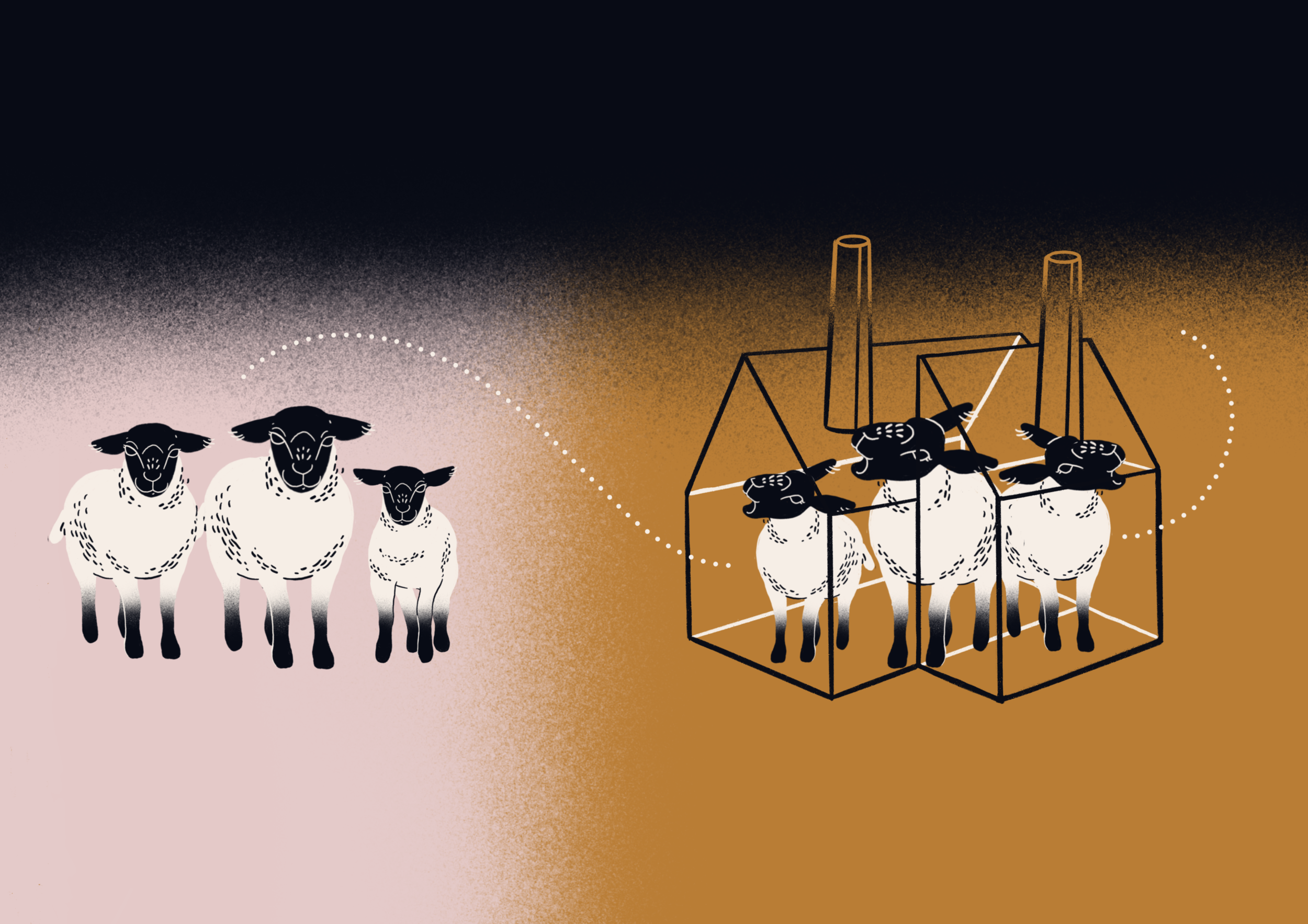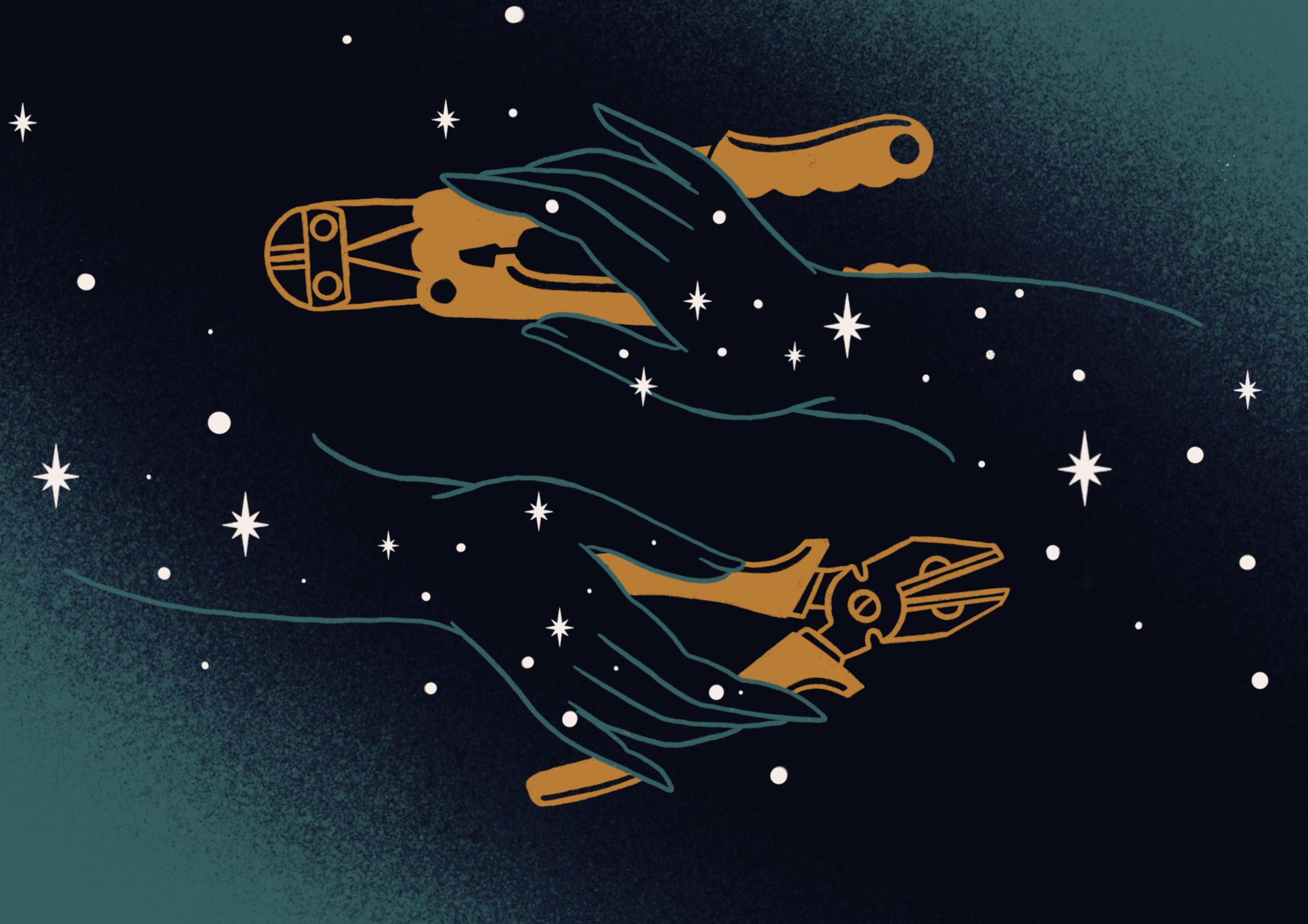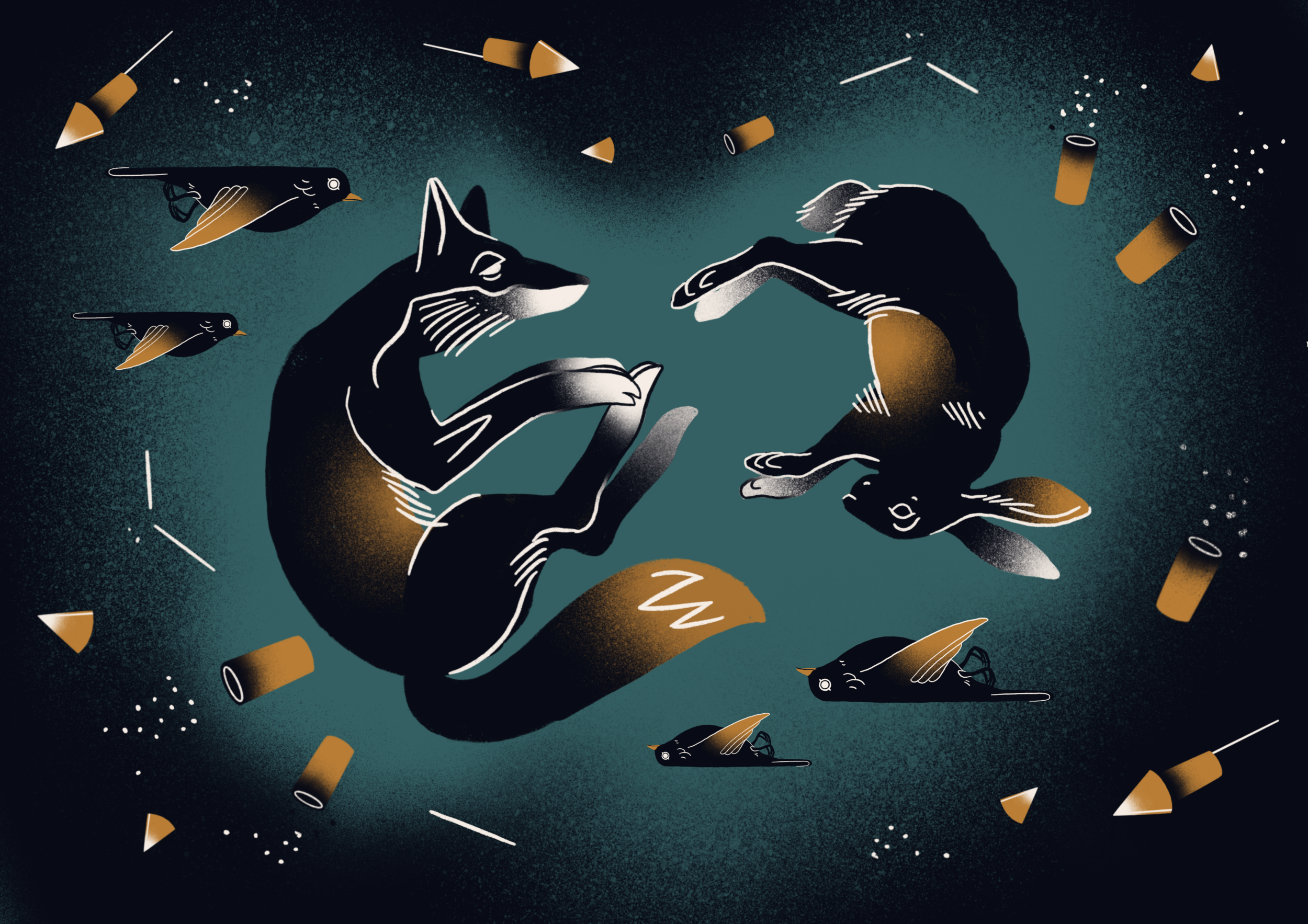WOOL IS CRUEL
Wool—just like leather (the skin of animals)—is advertised and marketed as “sustainable, natural and harmless to animals” and even I never thought about it at all which also never got me researching it because it was represented to me that way, my whole life long.
Just as with any other obvious or hidden animal source, I began to question wool when I went vegan, and I was quickly confronted with many unpleasant and hurtful images and videos that explained to me the injustice done to animals.
In this blog post though I want to talk about all the details when it comes to wool to explain to you why it is cruel and why you have to put your money into animal-free and organic materials.
AWARENESS OF WHAT WOOL IS
Wool is made up of the hair of various animals. Most people associate the word “wool” only with sheep and possibly different breeds of sheep. However, there are a variety of different types of wool that humans steal from animals such as goats, alpacas, rabbits, llamas, camels, and musk oxen, etc.; including different breeds of the said species.
I never knew how much cruelty wool causes to those bred and oppressed and exploited individuals.
As I dug deeper into all the horrible cruelty done to other animal individuals, I became more and more aware of how little I knew and never put together: wool is cruel; wool is violence. With me purchasing wool products—consciously or unconsciously—I was funding horrendous pain and suffering. I was funding murder.
THE CRUELTY AND LIES OF WOOL THAT NOBODY WANTS TO HEAR AND SEE
When we buy wool we are conditioned to picture “happy animals hopping and running around happily on endless vivid-green fresh meadows playing with each other until someone comes, look after them, and luckily shears them because otherwise, they’d die.” … I mean, … I have to admit the animal industry did and still does an amazing job brainwashing people/consumers to actually believe these lies and even get people to instantly have this romanticized image in their head of “living in harmony, co-existence, and symbiosis with animals,” treating them well and only want the best for them until … yes, uhm … until what exactly? Right, until they get stabbed or stunned to death. *Bubbleburst*
What most people never think of is that sheep get forcefully confined by the thousands and hundred thousand, kept on farms having very little to no space at all to keep as many animals as possible to make the most profit with them. Bigger animals are mostly standing in their feces and have to undergo horrendous procedures such as mulesing (explained in a bit) and neutering without any anesthetics and severe deep cuts which are left untreated to avoid further costs. The constant treatments would cost more than simply breeding new living beings. That’s how these sentient beings’ lives are seen.
Smaller animals, like the angora rabbit, are kept and bred in tiny cages we know from animal tests, fur farms, and the egg industry. These beings also suffer an unimaginable life, which can’t even be called as such. They die as a result of stress, depression, malnutrition, cuts and wounds from shears or mutilation, and violence from humans.
No matter what you are told about the “organic, humane and high-quality-manufactured” wool and production, or as many like to call it “harvesting of wool”, it is a complete deception and a bare lie! It is used to deceive the consumer by diminishing the suffering of the victims; the non-human animals. Language is very powerful and is often used to mislead people.
Those we love we do not exploit and kill, or do we?
And if the wool came from animals that were able to feel the grass underneath their feet, remember that also those individuals are treated as nothing more than wool-producing machines too, no matter how much they are “loved”, and they end up at a slaughterhouse if they no longer produce and perform what is expected of them. Be aware of what industry you pay into supporting which values; right, no ethical values at all.
UNDERSTANDING THE ARTIFICIAL DEPENDENCY AND INJUSTICE
“It is not ours, so why do we steal it from them?”, was all I needed to understand that firstly wool doesn’t belong to us, and secondly animals are imprisoned, used, exploited, tortured, and killed for what belonged to them.
What humans need to understand that the animals used for wool would not naturally grow so much wool that they need to be sheared. They are genetically bred this way and that is the horrible fact about it. Not only have humans bred these animals to have this dysfunction of their bodies so that they can be exploited, but they are so overbred that they are born with physical limitations, which makes them dependent on humans because some would perish miserably without shearing. That doesn’t mean we should take what is theirs and what they need, and sell it to make them product machines.
THE VIOLENCE OF SHEARING
Shearers are usually paid by volume, not by the hour, which encourages them to work very fast without any regard for the welfare of the animals. This hasty and careless shearing by holding and pressing down the animal without its consent often leads to severe injuries, which are most of the time left untreated. Commonly, strips of skin, teats, tails, and ears are often cut or ripped off during shearing which leaves the individuals in suffering and constant pain. Bigger and worst wounds are sewn shut simply using a needle and thread without using medical gloves and disinfectants and without giving the animal any pain relief due to extra costs and time.
WHAT IS MULESING?
The unnatural, genetically bred overload of wool causes many sheep to collapse and even die of heat exhaustion during hot months, and the wrinkles collect urine and moisture. Flies, who are attracted to the moisture, lay eggs in the folds of skin, and maggots hatch and eat the sheep alive.
To ‘prevent’ this so-called “flystrike,” farmers perform a barbaric procedure called “mulesing,” in which they force live sheep onto their backs, trap their legs between metal poles and, often without any painkillers, cut huge chunks of skin off the animals’ backs. This is a very stressful and intensely painful procedure, often resulting in a state of shock and leaving the individual suffering for weeks and longer with an open wound.
Mulesing is illegal in some countries, which doesn’t stop farmers from doing it. By buying wool of any animal you are supporting the demand for wool and therefore support these barbaric practices anyway.
WHAT IS WINTER LAMBING?
Another not widely talked about term is “winter lambing,” which means that sheep are overbred by farmers during winter months to produce the highest number of lambs at the lowest cost.
Genetic technology nowadays assures that twins or triplets sometimes up to five or six lambs are born at a time. The survival rate of these babies is extremely low. Many don’t make it through the extremely cold winter months. The mother is forced to leave the weak dying baby behind so they can keep up with the flock and eat to survive. Some mothers stay with their babies and die with them.
Those who survive will have anything but a harm-free life in front of them. A life in captivity and exploitation and death is their terrible fate for their wool, their milk, and their flesh.
Winter lambing corresponds with the market demands for sheep-derived products. Stop this from happening by purchasing plant-sourced or synthetic fibers.
THE LIES AND SUSTAINABILITY PROPAGANDA BEHIND (ORGANIC) WOOL
It can’t be said often enough: DON’T BELIEVE THE UGLY AND SHAMELESS LIES!
The animal industry is trying to sell you something that comes from an animal, just like wool, as “sustainable, eco-friendly and humane”. These non-human animals were seen as a profit-making product machine since the day they were born. Every animal that is born into the animal industry was bred to take their fleece, hair, skin, and life from them for human benefit, advantage, convenience, and profit. They are sentient beings who were bred to be part of an exploitative system, and will be killed in the end after they are used; no matter what the animal-welfare-washing label says.
If you look at sites that advertise “high-quality wool,” they speak of animals as if they were products; matter-of-factly and with distance from the living being as if their lives were unseen and worth nothing.
A typical advertising strategy used and type of manipulation and animal-welfare-washing is as follows:
On websites of animal hair, skin, and meat producers as well as on pages of “animal welfare certificates” you will often find a “sustainability” section written in mostly cryptic words that are meant to sound good and nothing else. They are simply trying to intimidate, dazzle, and distance the reader from the animal victims to focus on the sustainability factor (seemingly appear as innovative & caring) instead of showing the animals being exploited. This is all done to give the reader the impression that they are supporting something good... and it’s working because people tend to believe what sounds good when supporting something that causes a lot of harm and suffering to others.
Those pages especially like to praise how you can get the skin, the meat, the wool, and milk from them (aka. using the whole body of their victims) like it’s normal that animals are here for us to use, to exploit, to kill, to the skin and to consume their tortured body parts. They are trying to sell you a “better way” of exploiting and killing someone, but are you buying it?
WHAT WOOL TERMS YOU NEED TO LOOK OUT FOR
Wool is not just called wool, but it is also called by the following:
merino wool
angora
cashmere
mohair
yarn (always check if it’s from plant fiber, synthetic, or animals)
tweed
fleece (can be animal-sourced) or virgin wool
pelotage
worsted
qiviut (musk ox)
flock
flannel (check twice if it’s made from animals or cotton)
… and the list goes on and on and on.
What I am trying to say here is: DO YOU RESEARCH, never assume and when in doubt do not buy the product, but look for another one ideally made from plant fibers!
WHAT TO BUY INSTEAD OF WOOL
The first and foremost important thing is starting to see wool as a product of cruelty and not as a fabric to wear on our bodies. It is not ours to take, it causes great pain to sentient beings and kills them sooner or later and it’s not an industry you want to fund in general, mistreating, mutilating, and torturing innocent animals.
There are so many fabrics that are just as warm and thermally insulating or you just go with the onion look of putting on multiple layers of plant-sourced fabrics, which I do most of the time, and guess what? It does the job so well!
~~~~~
NOT YET VEGAN?
Please check out this page and make the change!
Please note:
➸ when the term "human" is used, then human animals are meant by it, and the same applies to the term "animal", who are non-human animals.➸ text and illustrations are intellectual property of Kerstin Brueller. Sharing the content for private purposes is appreciated and always to be provided with a copyright. It is prohibited to copy and share it for commercial purposes. Please contact me for a collaboration, if you are unsure or have any further questions. Thanks for your understanding.➸ I personally care much about symbolism and the meaning of certain shapes and metaphors. The images and interpretations are the representation of my own imagination.SOURCES
sponsored sources are marked with a ★


















